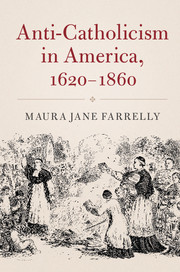'Farrelly combines the best features of a first-rate scholar, an engaging raconteur, and an accomplished journalist's eye for the larger picture to narrate a rollicking account of the first two hundred years of what has been called 'America's oldest prejudice'. Hers is the new magisterial voice on the block for understanding the colonial and Revolutionary Era distrust of Catholic 'others'. Run out and buy this book.'
Mark Massa - author of The American Catholic Revolution
'Though thankfully rare today, anti-Catholic prejudice shaped many discussions of public policy early in America's national history. This book fully explores that past, providing important context for understanding religious difference in our present.'
James O’Toole - author of The Faithful: A History of Catholics in America
'This timely book explores the transformation of a mistrusted minority faith into the largest denomination in the United States. In lively prose, Farrelly guides readers through some of the most important political and cultural contests in early American history, introducing unforgettable and unexpected characters along the way. Anyone interested in the history of American tolerance and intolerance should read this book.'
Catherine O’Donnell - Arizona State University
'Anti-Catholicism was a defining prejudice in early America. It clarified what Protestant Americans meant by freedom and where they drew the boundaries of tolerance. In this remarkably concise and vividly composed volume, Maura Jane Farrelly demonstrates how historical tensions between Catholics and Protestants played out in the United States. Anti-Catholicism in America, 1620–1860 offers a riveting account of the struggles that raged within the Church, as well as the resistance it faced from without. It is an elegantly told story of American Catholicism and its long, painful journey into the national mainstream.'
Chris Beneke - Bentley University, Massachusetts
‘… her theses should readily lead to robust classroom discussions. The book should be strongly considered by teachers looking for a concise, readable and engaging text.’
Paul J. Gutacker
Source: The Journal of Ecclesiastical History



